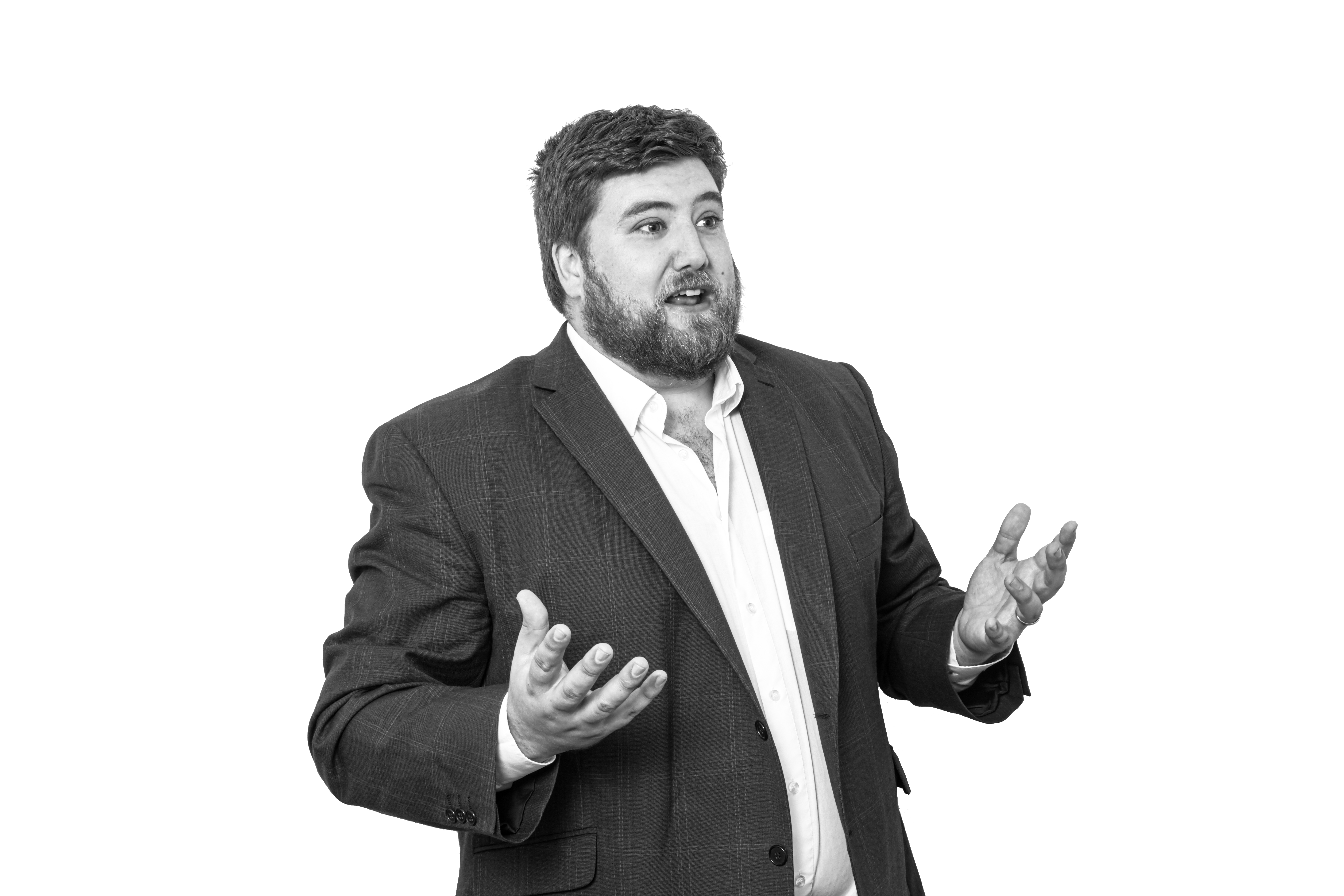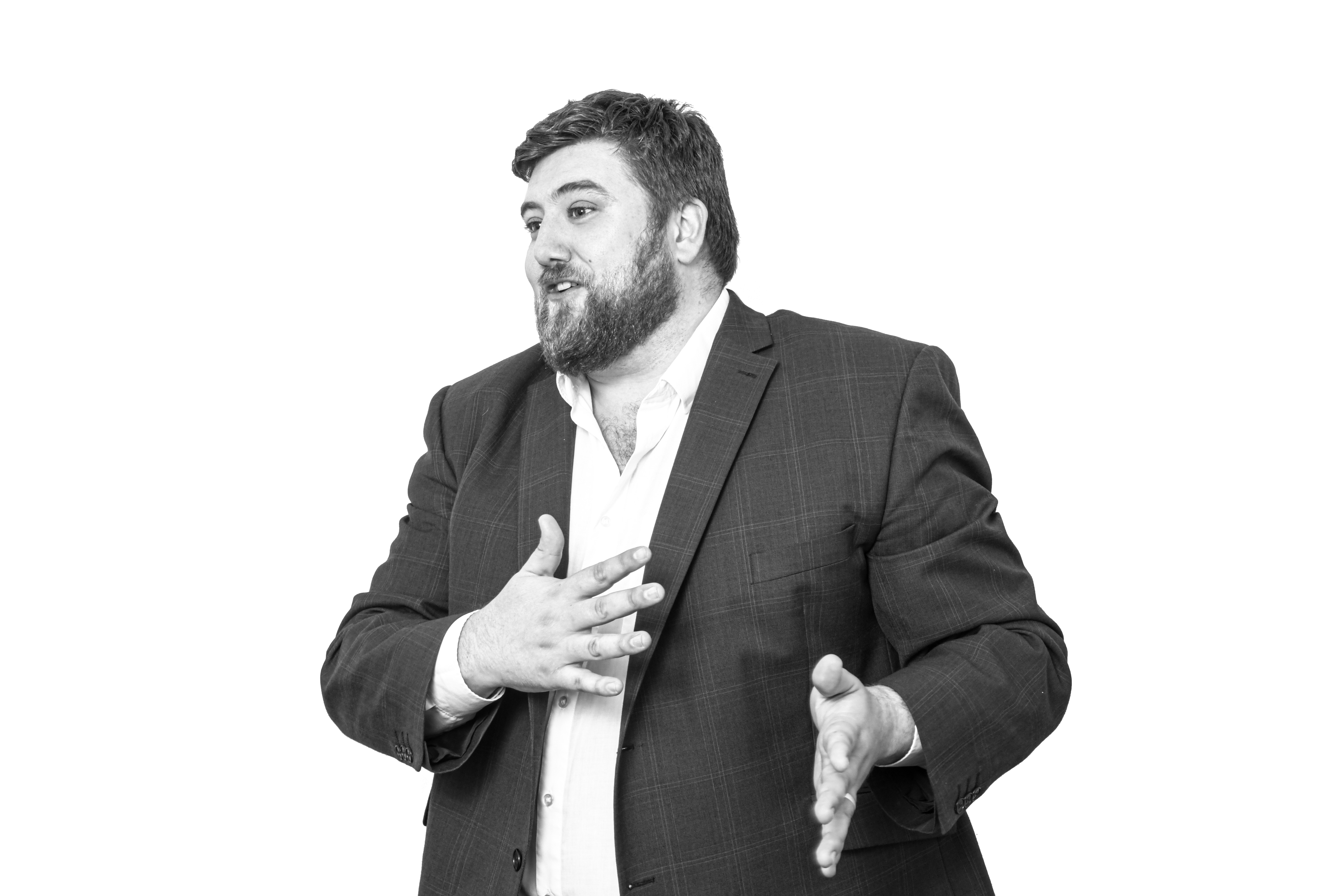When I was very, very young, I was very, very blonde and had an embarrassing bowl haircut. My old nursery teacher used to submit kids to go on TV shows. And this teacher, because of the blonde hair, put me forward to be the next milky bar kid. Apparently, I was second choice, so if anything was to happen to the milky bar kid on the day of filming I was to step in. Who knows, if he’d been ill that day, I might’ve gone on a completely different career path.
I grew up quite close to the City St George's Tooting campus, I grew up in Worcester Park which is near Kingston. I’ve never really lived anywhere else, it’s always been south west London. My parents always focussed me towards academic goals because that was what I enjoyed, but, in truth, I can’t remember a lot from my early life.

I was always drawn towards things with a purpose. Ever since I was young I was interested in science purely because of the logic of it.
I remember once I was in a Biology class at school and the teacher was discussing DNA. And I asked ‘okay, yes, I understand that DNA is the code to how humans are created but, we’re not a computer, how do we know how to do that?’ and I kept asking the biology teacher ‘yes, but how does this work? And how does that work?’
And in the end, he went in to the back, got a textbook, plonked it down in front of me and said ‘read that’ and got on with the lesson. It was only then that I realised that I was completely derailing the purpose of the lesson.
After a while of asking questions like that, the answer ended up being: no one knows yet. And I was like ‘right, well let’s find out’. And from that came my interest in science. Initially I was more interested in the Chemistry side of things but that quickly turned into Biology, then into Medical Research and eventually into Biomedical Science. But it was always science that I wanted to do and it always came back to the question of why.

Secondary school was where I really clicked. I went to Sutton Grammar which was a very scientific orientated school. I was in my element and absolutely loved my time there.
The school pushed you hard trying to get that little bit more out of you but it was fantastic. And that was where the question of why was really expanded on. Teachers would say ‘I don’t know the answer to that, look it up. Find out for yourself.’ And that’s where a lot of my passion for science came from.
I was umming and ahing for years when I was doing A levels about whether to do Science or Medicine because I wanted to do research but I also wanted to learn about the human body.
I was recommended to go for Medicine, so I applied for Medicine and Biomedical Science at the School of Health and Medical Sciences as well as a few other universities. I got an offer for Medicine here and missed out by one mark, so I came here for Biomedical Science instead which is a well-worn tale.
In hindsight, it was written in the stars.

I’m not the most confident with new people or being in a group and not knowing anyone. That wasn’t a problem coming toCity St George's (Tooting), it’s an incredibly friendly place to be. If you’re a little bit timid or a little bit nervous, it doesn’t matter, people will welcome you.
Once I arrived here I very quickly found a group of people that I formed long friendships with. And that wasn’t just with the students, it was staff as well.
In my first year, I started volunteering in the lab. Most people don’t get that opportunity so I was very lucky. When I started doing research that hadn’t been done before, that was it for me. The first time we discovered something that no one had ever known was absolutely incredible. The excitement of that was very addictive. That’s when I got the research bug.

In between second and third year, Professor Greenwood, who was Dr Greenwood at the time, and Dr Max Harhun, who I was volunteering with in the labs, recommended that I go for the Mike Stock scholarship award. It was essentially some money to keep you working in the labs over the summer holidays. I won the award and it allowed me to get a couple of hundred quid each week to do research. That’s when I made my first contributions towards a scientific paper.
Eventually I did an MRes and presented that for the first time at a conference in Edinburgh. When I was up there I noticed I had a swelling in my lymph nodes and wasn’t particularly well. I still presented but I didn’t attend much of the rest of the conference.
When I got home, I had a hundred and one different examinations and got diagnosed with Hodgkin’s lymphoma.
I had the swelling the size of a lemon on my neck but the psychological side of things was by far the worst of it.
I had an operation to remove the tumour and four months of chemotherapy. It took about a year to get over with everything involved. That was when I got more of an insight into St George’s Hospital rather than the University.
When I got the all-clear, I couldn’t believe it.

It was about a year and a half between going away and coming back to start a PhD. I initially came back part-time as a lab technician which meant I could gently build up to getting back to full strength. I’d come in for a few days a week and leave exhausted but gradually I got stronger and stronger. By the point I started my PhD, I was back up to full speed.
If you pick up any PhD, the first page will be acknowledgements and it really is the most important bit in the book. There will be a list of people who helped that person write that PhD and, without their help, that PhD wouldn’t have been done.
Although it’s focussed on one person and is a huge amount of personal effort, a PhD is in some respects a team effort. Lots of people contribute, that could be someone teaching you a skill, supervisors pointing you in the right direction or giving you a kick up the arse when needed, or your fiancé not complaining because you don’t have time to go out.
It was a big challenge but, if it was easy, it wouldn’t have been worth doing.

Moving away from academia was a big decision and a bit of a wrench but I always knew how volatile the scientific life could be. I was approached by Dr Vanessa Ho after I’d done my PhD who asked for some help doing data analysis for the Athena Swan project. I said yes, and threw myself into it.
It was something I discovered quite a passion for, it was really interesting work and I learnt some skills that I didn’t normally use. On the back of the experience, I applied for my current role managing the University’s alumni database.
I really like the eclectic nature of the work, it’s not just about database work, despite it seeming like it would be. There’s project management around telephone campaigns, prospect research, trust and foundation work – it’s really varied.

It’s hard to articulate what City St George’s - Tooting means to me. The School and St George's Hospital, have been a part of many of the highs and lows in my life. I’ve been here for over a third of my life, it feels like home.
A lot of things have changed over the 12 years I’ve been here but the people are just as friendly. You see it all the time, you can’t get a meeting room because there’s a group of students teaching themselves something. That collaborative spirit is unique. People willing to put their own time and their own research goals aside to help each other. It’s fantastic.
And it’s not the building or the site, it’s not even the goals or aspirations within the building, it’s the people, the people you work alongside on a daily basis. That’s what makes St George’s for me.
Dr Christopher Huggins is an alumnus of City St George's, School of Health & Medical Sciences (Tooting) who has completed a BSc (Hons), MRes and PhD and currently works as a Database and Research Officer in the Development and Alumni Relations team.
